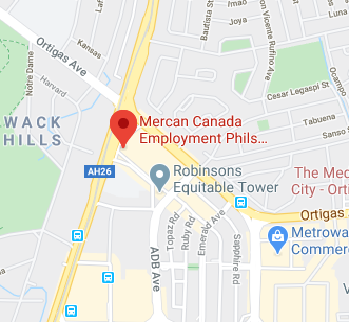Entry/Exit Program
The Entry/Exit Program is a joint initiative between Canada and the United States (U.S.), based on the Beyond the Border Action Plan.
On this page
- Purpose
- What information is available
- Who can access entry and exit information
- Entry and exit data use by line of business (LOB)
- Data protection, privacy and rules for onward disclosure
- Background
- Collection and access to traveller data
Purpose
IRCC will obtain accurate and objective entry and exit information from the Canada Border Services Agency (CBSA) to support the administration of the Immigration and Refugee Protection Act (IRPA), the Citizenship Act and the Canadian Passport Order.
IRCC will be able to query the CBSA’s Entry/Exit Information System via the Global Case Management System (GCMS) to
- verify residency requirements in support of applications for grants of citizenship (CIT) or permanent resident cards
- verify if a temporary residence applicant may have previously overstayedFootnote1 their allowable period of admission in Canada
- assist in an investigation of an individual’s entitlement to a Canadian travel document
- verify that sponsors are residing in Canada
- verify the residency of spouses and partners under the spouse or common-law partner in Canada class
- verify whether or not a refugee claimant entered Canada using their travel documents and
- support investigations of possible fraud in relation to immigration, citizenship, and passport/travel document programs
What information is available
Available client-specific data elements include
- given and family names
- aliases
- date of birth
- gender
- country of birth
- country of citizenship
- passport details
- date of entry/exit
The above information is available for the following types of entries and exits
- land
- air
Types of entries and exits not yet available
- marine (including cruise ships)
- rail
When performing an E/E query through GCMS, the results are received automatically, and they take between 30 seconds to 2 minutes to transmit from CBSA’s systems to IRCC’s. As soon as CBSA enters the data into their systems, the information immediately becomes available to be queried through GCMS.
Who can access entry and exit information
The Customs Act allows the CBSA to collect entry and exit data on all travellers for all modes of travel, excluding marine and rail exits. Under the IRCC–CBSA memorandum of understanding (MOU), information sharing between both departments for the administration and enforcement of IRPA is considered consistent use, as per paragraph 8(2)(a) of the Privacy Act. Client consent is not required in order to query traveller entry and exit information.
Where entry and exit information has been deemed relevant to an IRCC officer’s decision in relation to a specific program (outlined in these PDIs), access is granted by way of system-user roles; only roles that allow a user to render a decision on an application in GCMS have access to the “Entry/Exit†tab.
GCMS users with the following roles can manually create and submit an Entry/Exit request
- manager or team lead
- visa officer
- designated immigration officer
- non-immigrant case analyst
- assistant
- immigration program officer
- CBSA assistant
- CBSA Case Review
- CBSA Hearings
- CBSA management
- CBSA Minister’s delegate
- CBSA officer
- migration integrity officer
- in-Canada assistant
- local citizenship officer
- case processing centre service delivery clerk
- local office clerk
- case processing centre agent or officer
IRCC officers are not authorized to disclose entry and exit information unless the disclosure is necessary for the administration of the IRPA and is covered under existing MOUs or similar information-sharing agreements. Any disclosure that is not explicitly covered under an existing agreement must be governed by CBSA as the owner of the data.
Access will be given to all authorized CBSA employees, including
- border services officers and superintendents
- criminal investigations officers and analysts
- document analysts
- hearings officers and hearings advisors
- inland enforcement officers and enforcement case officers
- intelligence officers and intelligence analysts
- National Border Operations Centre (NBOC) officers
- National Security Screening Division officers and analysts
- National Targeting Centre (NTC) targeting officers
- NTC targeting operations intelligence
- trusted traveller officers
Entry and exit data use by line of business (LOB)
The entry and exit information will be used exclusively for the following application types across all LOBs at IRCC. See the chart above for data availability timelines, as all LOBs will be implicated differently.
Immigration
Temporary residence
The following temporary residence application types can use entry and exit data
- temporary resident visas
- temporary resident permits
- visitor records
- work permits and work permit extensions
- study permits and study permit extensions
- electronic travel authorizations (eTAs)
Entry and exit data can be used to identify whether a foreign national has previously exceeded their authorized period of stay in Canada.
Overstay monitoring begins upon a traveller’s entry into Canada and ends upon their exit. If the client has overstayed their visit, CBSA will indicate this “overstay indicatorâ€, and it will appear as a checked box in GCMS once queried.
Once a sufficient number of air carriers are on-boarded (targeting November 2022 as latest date), overstay indicators will begin appearing within the Entry/Exit search results for temporary residents who have overstayed their allowable time in Canada. This will prompt IRCC officers to make an informed determination on select temporary residence applications.
Permanent residence
The following permanent residence application types can use entry and exit data
- permanent resident cards
- permanent resident travel documents
- overseas refugees
- family class sponsorships
Entry and exit data can be used to outline the periods of time spent in and outside Canada for people applying for permanent residence status determination (PR Cards and PR Travel Documents). This will provide a full picture of whether or not residence has been maintained.
In addition to checking residency requirements, other reasons for initiating an E/E query could include investigations into misrepresentation or revocation of Canadian documents.
For sponsorship applications, entry and exit data can be used to determine if a sponsor is residing in Canada.
Refer to the data availability table above for more information on what data is currently available to query.
Refugee claims (inland)
Applications for in-Canada asylum can also use entry and exit data to verify information presented by the claimant.
Entry and exit data can be used as a more thorough and robust travel history of claimants, which may give rise to concerns related to program integrity, credibility and exclusions. Records could demonstrate inconsistencies with the claimant’s basis of claim narrative, and this could prompt further investigations.
Citizenship
Exit and entry data can be used to
- verify compliance with physical presence requirements for grants of citizenship
- assist in the verification of other requirements, such as
- flagging of potential loss of permanent resident status
- the need for applicants to submit foreign police certificates
- misrepresentation
- verify compliance with physical presence requirements for resumption of citizenship
- assist in cases of revocation of Canadian citizenship
Refer to the data availability table above for more information on what data is currently available to query.
Investigations
Citizenship revocation investigations
Entry and exit data can be used to support administrative investigations into an individual’s acquisition of citizenship. Specifically, data will be used to confirm whether or not the client misrepresented their residence in Canada for the purpose of acquiring citizenship.
Passport investigations
Entry and exit data can be used to support administrative investigations into an individual’s entitlement to Canadian passport services. For example, data can be used to validate a travel document bearer’s travel history and use of a Canadian travel document to determine whether grounds exist to pursue refusal or revocation.
The system captures if a person uses multiple passports (or other travel documents) but only if all have been used by the client in the history of their travels between Canada and the U.S. If only one passport (or other travel document) has been used, it will be the only one to show in E/E query results. However, separate queries can be initiated using either document to help identify the person.
Permanent residence and refugee claims investigations
IRCC can query entry and exit information on a closed application as part of an investigation if there is a clear reason to reopen the application, but only if passage information would be influential to a decision.
Note: Once an application is reopened, the client is afforded procedural fairness to address the new information.
Port of entry verifications and permanent residence determinations (CBSA users only)
Once fully implemented, entry and exit information will give the CBSA the ability to
- identify individuals who are potentially overstaying their lawful period of stay
- better monitor the departure of individuals who are subject to removal orders and warrants
- verify that residency requirements are being met by permanent residents and applicants for continued eligibility for immigration and citizenship programs
This will allow the CBSA to determine who is in Canada and who has left the country.
Data protection, privacy and rules for onward disclosure
IRCC retains only traveller passage information applicable to the client associated with an application.
Access to information and privacy (ATIP) requests and requests for corrections
Travellers have the right to request a copy of their personal travel history through the Privacy Act, and they may ask that a correction be included if any of the information is incorrect. More information on corrections of personal information can be found on the CBSA website. If a traveller has requested a correction to their passage information, IRCC officers are notified of this correction and are able to re-query the CBSA’s database to obtain the most up-to-date information.
Onward disclosure
IRCC officers are not authorized to disclose entry and exit information unless the disclosure is necessary for the administration of the IRPA and is covered under existing MOUs or similar information-sharing agreements. Any disclosure that is not explicitly covered under an existing agreement must be governed by CBSA as the owner of the data.
Background
The program’s purpose was to establish a coordinated Entry/Exit Information System to facilitate the exchange of travellers’ biographic information (such as their name and date of birth) collected upon entry at the common land border, so a record of entry into one country can be considered a record of exit from the other.
In addition to the exchange of data with the U.S. at the land border, regulations for the air mode came into force June 25, 2020, allowing the CBSA to begin collecting pre-departure exit information and exit records directly from commercial air carriers.
With the passing of Bill C-21, An Act to amend the Customs Act, data on all travellers (including Canadian and U.S. citizens) has begun to accumulate as of July 11, 2019, for travel by land. On June 25, 2020, the CBSA began collecting pre-departure exit information and exit records directly from commercial air carriers. Commercial air carriers will have until November 2022 to comply.
Collection and access to traveller data
The Customs Act currently allows the CBSA to collect land entry and exit data and air entry data on all travellers. Regulatory amendments for exits by air came into force in June 2020. Under the IRCC–CBSA MOU, information sharing between both departments for the administration and enforcement of IRPA is considered consistent use, as per paragraph 8(2)(a) of the Privacy Act.
Where entry and exit information has been deemed relevant to an IRCC officer’s decision in relation to a specific program (outlined in this PDI), access is granted by way of system-user roles; only roles that allow a user to render a decision on an application in GCMS have access to the “Entry/Exit†tab.
It is possible to obtain data and/or run reports on E/E. Such a report can be run in two ways
- submit a request to OPPB
- reports can be generated using GCMS Answers or Cognos (this option is only available to authorized GCMS users)


